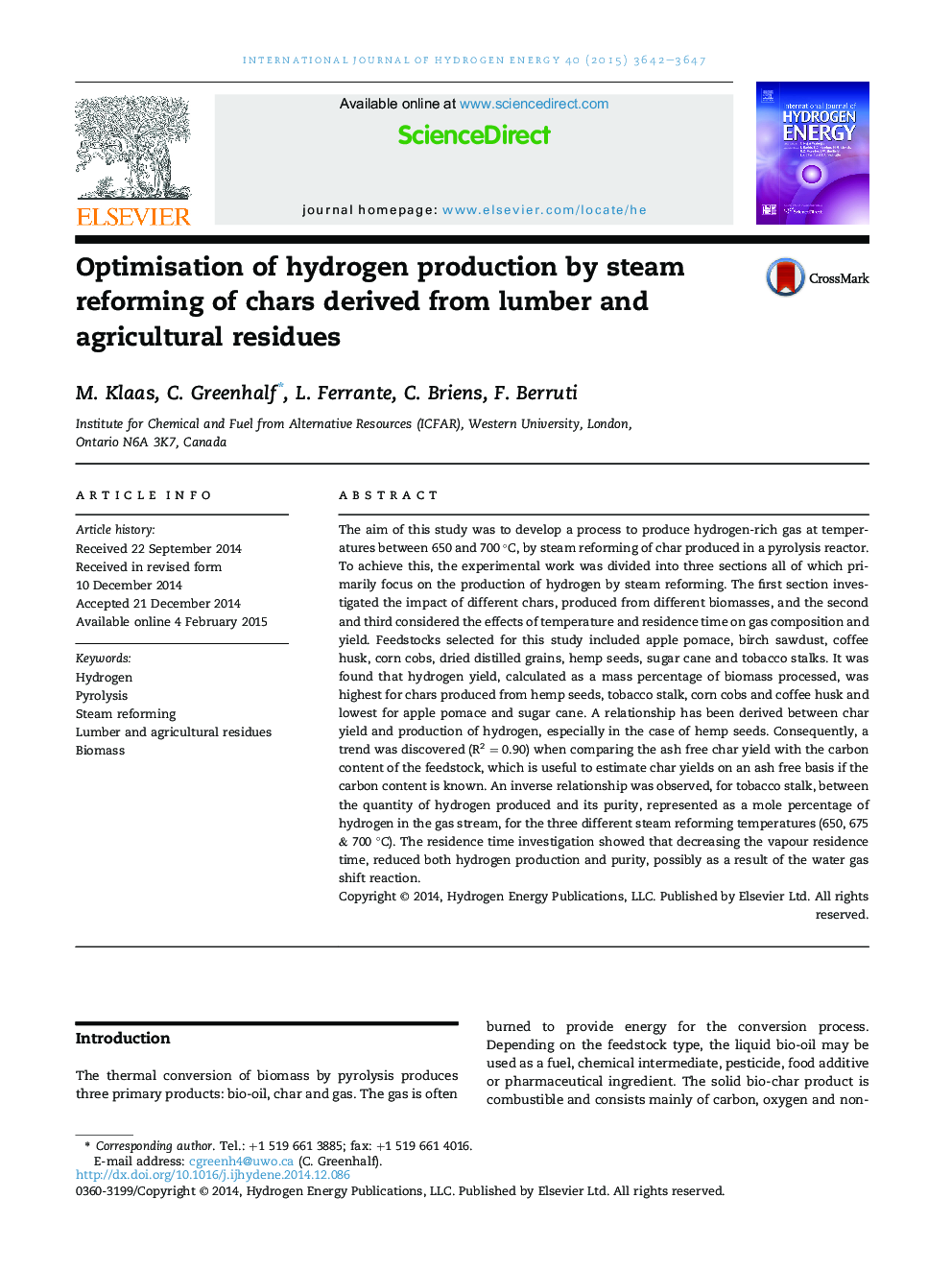| کد مقاله | کد نشریه | سال انتشار | مقاله انگلیسی | نسخه تمام متن |
|---|---|---|---|---|
| 1269793 | 1497464 | 2015 | 6 صفحه PDF | دانلود رایگان |
• Hydrogen rich gas is produced using a single stage reactor at low temperatures.
• Decreasing the vapour residence time reduces hydrogen production and gas purity.
• Low temperature steam reforming adds value to the pyrolytic char.
• The pyrolysis ash free char yield is directly related to the carbon content.
The aim of this study was to develop a process to produce hydrogen-rich gas at temperatures between 650 and 700 °C, by steam reforming of char produced in a pyrolysis reactor. To achieve this, the experimental work was divided into three sections all of which primarily focus on the production of hydrogen by steam reforming. The first section investigated the impact of different chars, produced from different biomasses, and the second and third considered the effects of temperature and residence time on gas composition and yield. Feedstocks selected for this study included apple pomace, birch sawdust, coffee husk, corn cobs, dried distilled grains, hemp seeds, sugar cane and tobacco stalks. It was found that hydrogen yield, calculated as a mass percentage of biomass processed, was highest for chars produced from hemp seeds, tobacco stalk, corn cobs and coffee husk and lowest for apple pomace and sugar cane. A relationship has been derived between char yield and production of hydrogen, especially in the case of hemp seeds. Consequently, a trend was discovered (R2 = 0.90) when comparing the ash free char yield with the carbon content of the feedstock, which is useful to estimate char yields on an ash free basis if the carbon content is known. An inverse relationship was observed, for tobacco stalk, between the quantity of hydrogen produced and its purity, represented as a mole percentage of hydrogen in the gas stream, for the three different steam reforming temperatures (650, 675 & 700 °C). The residence time investigation showed that decreasing the vapour residence time, reduced both hydrogen production and purity, possibly as a result of the water gas shift reaction.
Journal: International Journal of Hydrogen Energy - Volume 40, Issue 9, 9 March 2015, Pages 3642–3647
